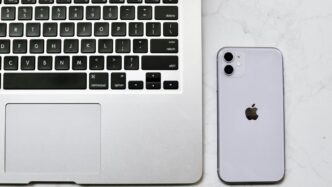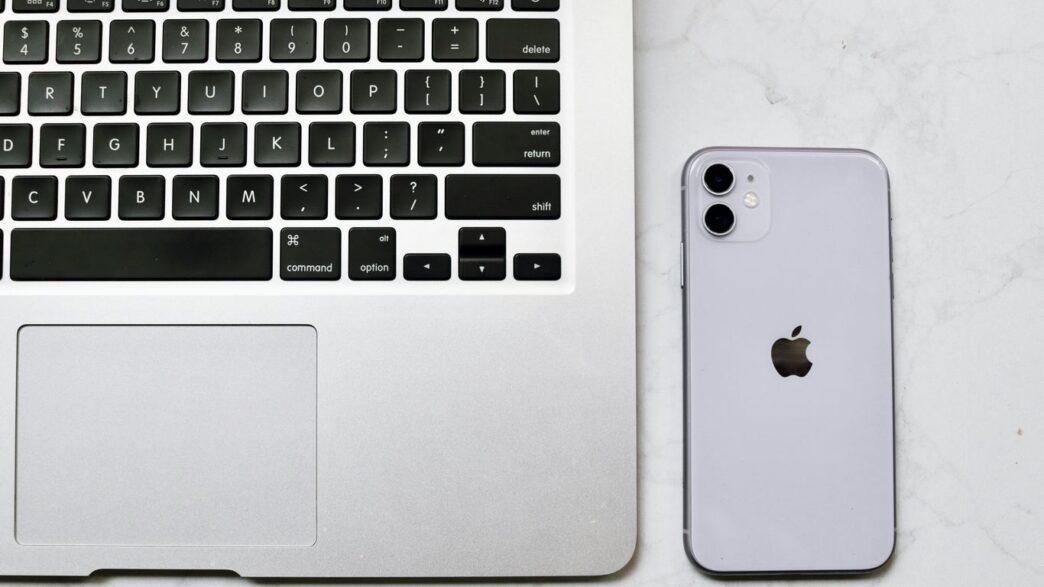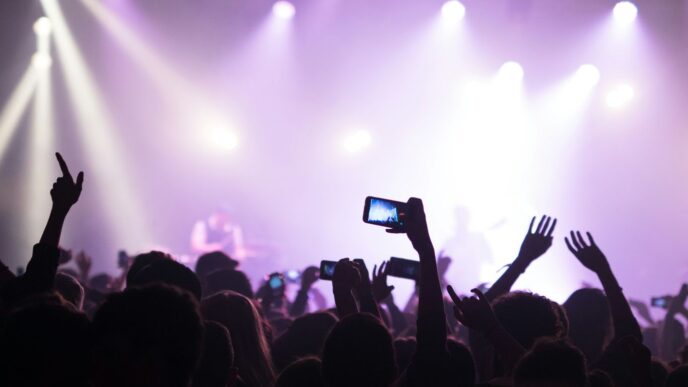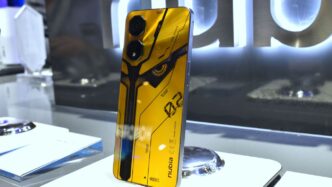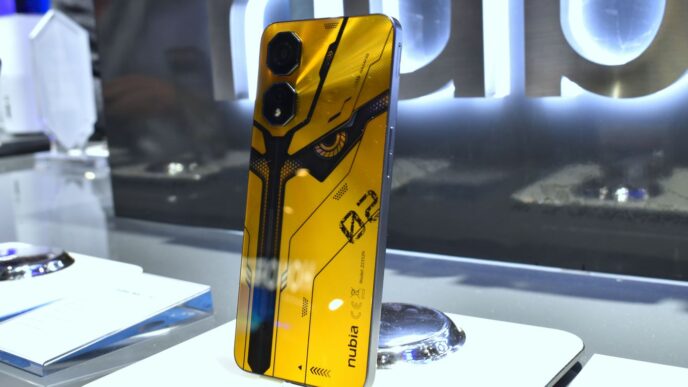Finding a good phone without spending a fortune can feel like a puzzle. You see all these fancy phones advertised, but the price tags are just wild. Luckily, you don’t need to drop a ton of cash to get a device that works well for everyday stuff. We looked at a bunch of phones to figure out the best cheap phone services and devices for 2025. Some are great all-rounders, others focus on battery life, and there’s even a cheap iPhone option if that’s your thing. Let’s check out what made the cut.
Key Takeaways
- The Google Pixel 9a is a top choice for a budget-friendly smartphone, offering a lot of value for its price.
- For those seeking an Apple device on a budget, the iPhone 16e is presented as the most affordable new iPhone option.
- Cheap phones often involve trade-offs compared to flagship models, particularly in areas like camera quality, processing power, or screen features.
- When choosing a budget phone, consider what features are most important to you, such as battery life, camera capabilities, and software update support.
- Samsung and Google generally offer good software update policies for their budget-friendly Galaxy A series phones, while iPhones typically receive updates for several years.
1. Google Pixel 9a
Alright, let’s talk about the Google Pixel 9a. For anyone looking to get a really good phone without emptying their wallet, this one’s a strong contender. It really feels like you’re getting a lot for your money, especially when you consider the price tag. Google managed to pack in some nice upgrades from the previous model, like a refreshed design and a better display. Plus, it’s got some of those smart AI features that Google is known for, which can actually be pretty handy in day-to-day use.
Now, it’s not perfect, of course. To keep the cost down, Google had to make a few cuts. For instance, you won’t find the satellite SOS feature here, which is something you’d get on the more expensive Pixel models. And while the battery will get you through a full day, it’s not exactly groundbreaking. The processor is decent for everyday stuff, but if you’re a heavy gamer or need top-tier performance, you might notice it.
Here’s a quick look at what you get:
- Display: A bright 6.3-inch Actua pOLED screen.
- Cameras: A 48MP main camera and a 13MP ultrawide.
- AI Features: Access to Gemini Live, Magic Editor, and more.
- Build: Solid and feels good in the hand.
Overall, if you want a phone that does most things really well, takes decent pictures, and has some neat AI tricks up its sleeve, all while staying under $500, the Pixel 9a is definitely worth checking out. It’s a smart choice for most people who just want a reliable phone that doesn’t cost a fortune.
2. iPhone 16e
Alright, let’s talk about the iPhone 16e. If you’re an Apple person but your wallet isn’t exactly overflowing, this might be your jam. It’s the most affordable way to get into a brand-new iPhone, and while it’s still a bit more than what we usually call ‘cheap,’ it’s a solid option if you’ve been eyeing the Apple ecosystem.
This phone is basically for anyone who likes Apple products but doesn’t want to spend a fortune on the latest and greatest. Seriously, if you can snag it with some carrier deals, you might even get it for under $200, especially if you’re okay with paying it off over time. It’s got a decent camera, a processor that’s still pretty current, and it even plays nice with Apple Intelligence.
Here’s a quick look at what you’re getting:
- Operating System: iOS 18
- Processor: Apple A18
- Camera: Modern setup (specifics vary, but it’s good for the price)
One thing to note, though: don’t expect MagSafe charging on this one. It’s one of the trade-offs for the lower price point. But hey, for a new iPhone experience without breaking the bank, the 16e is definitely worth a look.
3. Samsung Galaxy A26
Samsung’s Galaxy A26 is a solid choice if you’re looking for a phone that won’t break the bank but still gets the job done. It looks pretty much like other Samsung phones these days, with those rounded corners and flat sides. For everyday stuff like checking emails, browsing the web, or watching videos, it’s perfectly fine. It’s got a decent processor and enough RAM to keep things moving along without too much fuss. Plus, the battery life is pretty good; I got over 13 hours out of it in my tests, which means you can probably get through a whole day without needing to hunt for a charger.
What’s nice is that Samsung is promising quite a few software updates for this phone – four years for the operating system and five years for security patches. That’s a good chunk of time, so you won’t feel pressured to upgrade too soon. Oh, and it still has a headphone jack and a slot for a microSD card, which are features that seem to be disappearing from phones these days.
So, who is this phone for? If you need a smartphone that does more than just the absolute basics and you don’t want to spend a lot of money, the Galaxy A26 is a strong contender. The cameras are surprisingly good for the price, taking pictures that are clear and have nice colors. It’s not a flagship, but for what you pay, it’s hard to complain.
Here’s a quick look at some of its specs:
- Processor: Samsung Exynos 1280
- RAM: 6GB
- Operating System: Android 14 (with promises of future updates)
- Battery Life: Around 13 hours and 10 minutes in testing
- Extras: Headphone jack, microSD card slot
4. Samsung Galaxy A36
The Samsung Galaxy A36 is a bit of a head-scratcher. On paper, it seems like it should be a step up from its sibling, the A26, and it does have some nice features. The display is brighter, which is great for using the phone outdoors, and the battery life is pretty solid, getting you through a full day without much fuss. The cameras are also decent, capturing clear shots when the lighting is good.
However, things get a little weird when you look at performance. For some reason, the A36 felt choppier in everyday use compared to the cheaper A26. It’s not a deal-breaker for everyone, but it can be a bit annoying when apps take a moment longer to open or scrolling isn’t quite as smooth as you’d expect. Another point to note is that the storage isn’t expandable on this model, which might be a problem if you like to keep a lot of photos, videos, or apps on your phone.
Samsung does offer a generous six years of software support, which is fantastic for a phone in this price range. It means you’ll be getting security updates and OS upgrades for a long time, keeping your device safe and up-to-date. But if the phone is already feeling a bit sluggish now, it makes you wonder how it will hold up in six years.
Overall, while the A36 has its strengths, like the bright screen and long software support, the slightly disappointing performance and lack of expandable storage make it a phone that’s just okay, rather than a standout pick. If you’re looking for a Samsung device, the A26 might actually be a better value, or you might want to explore other options in this price bracket. You can sometimes find a free Samsung Galaxy A36 5G when you sign up for certain phone plans, which could make the value proposition a bit more appealing if you’re in the market for a new service anyway.
5. TCL 60 XE Nxtpaper 5G
The TCL 60 XE Nxtpaper 5G is a pretty interesting option if you’re looking for something a bit different, especially if you spend a lot of time reading on your phone. Its standout feature is the Nxtpaper display, which is designed to be glare-free and easier on your eyes. It really does make a difference, especially in bright light, and it has a special mode that feels more like reading a book than staring at a screen. It’s also quite affordable, which is always a plus when you’re trying to keep costs down.
Here’s a quick look at what it offers:
- Nxtpaper Display: This is the main draw. It’s matte, reduces glare, and has modes to help with eye strain. It’s great for reading articles, ebooks, or just browsing without that harsh screen reflection.
- Affordable Price: You get a lot of unique features for the money, making it a solid budget choice.
- Expandable Storage: Good to know you can add more space for your photos and apps if needed.
However, it’s not perfect. The battery life isn’t the longest, so you might find yourself reaching for the charger more often than you’d like. The cameras are just okay – don’t expect to be winning any photography awards with this phone. Also, software support can be a bit limited compared to some of the bigger names out there. It runs on Android 14, which is decent, and it’s powered by a MediaTek Dimensity 6100+ processor. It’s a good phone if your priorities are the screen and the price, but if you need top-tier cameras or all-day battery life, you might want to look elsewhere.
6. Motorola Edge
The Motorola Edge for 2025 is an interesting device, and honestly, it’s a bit of a mixed bag. It sports this really cool waterfall display where the glass curves over the sides, making it look pretty sleek and almost bezel-less. It’s a design choice that’s becoming less common, and while it looks neat, those curved edges can sometimes mess with touch input, which is a bit of a bummer.
Performance-wise, it’s not quite hitting the mark for its price point. I noticed some stuttering when I was using it, and for a phone that costs around $550, you’d expect things to run a lot smoother. Plus, Motorola’s software update policy isn’t the most generous, which makes it tough to recommend over something like the Google Pixel 9a, especially when you consider how long you’ll get updates on that one.
Here’s a quick look at some of its features:
- Display: Waterfall design with curved glass edges.
- Performance: Can be a bit laggy for the price.
- Software Updates: Not as extensive as some competitors.
- Price: Around $550.
7. Minimal Phone
Okay, so you’re tired of your smartphone constantly buzzing and pulling you into endless scrolling. The Minimal Phone sounds like it might be your jam. It’s got this cool e-paper touchscreen and a real physical keyboard, which is a bit of a throwback, right? But here’s the kicker: it still runs Android. This means you can technically get to all your apps, but don’t expect a super smooth experience. The screen’s refresh rate isn’t exactly speedy, so watching videos is probably out, and the monochrome display is tiny.
It’s a decent choice if you’re looking to cut down on screen time without completely ditching your digital life. Think of it as a tool to help you disconnect a little, rather than a full-on digital detox device. It’s an interesting idea for sure, especially if you want something different.
Here’s a quick look at what you might get:
- Display: E-paper touchscreen (expect a slower refresh rate).
- Input: Physical keyboard for typing.
- Operating System: Runs Android, so app access is possible.
- Goal: Designed to reduce smartphone distraction.
8. Motorola Razr 2025
The Motorola Razr 2025 is a bit of a different beast compared to some of the other phones we’re looking at. This isn’t your everyday slab; it’s a foldable flip phone, and Motorola has really leaned into making it a premium experience. It feels like a step up from previous Razr models, aiming for that high-end market.
When you hold it, the build quality is pretty impressive. It’s got this nice fabric backing that feels good in the hand, and the displays, both the main foldable one and the cover screen, are brighter and sharper than before. The main screen is a decent size for watching videos or browsing, and the cover screen is surprisingly useful for quick tasks without having to flip the phone open. It’s kind of cool to pay for your coffee with the phone closed – feels a bit futuristic, you know?
However, all this premium-ness comes at a cost. This phone isn’t exactly cheap. Motorola seems to have focused on packing in the best processor, a really solid battery that should easily get you through a full day and then some, and improved cameras. The battery life, in particular, is a big win here; it just keeps going.
So, who is this phone for? If you’re someone who wants a unique, fun, and well-built foldable that can do all the regular phone stuff really well, and you don’t mind spending top dollar for the latest and greatest from Motorola, then the Razr 2025 might be your jam. It’s definitely a conversation starter.
On the flip side, if you’re on the fence about foldables or worried about dust and sand getting into the delicate folding mechanism, this might not be the best choice. While it has water resistance, dust is still a bit of a concern for any foldable, and this one isn’t immune. It’s a bit of a luxury item, really.
9. Samsung Galaxy A15 5G
Alright, let’s talk about the Samsung Galaxy A15 5G. If you’re looking for a phone that won’t drain your wallet but still gets the job done, this one’s a solid contender. It’s one of those devices that Samsung keeps pushing out to cover the budget-friendly market, and honestly, they do a pretty good job with it.
This phone is a great pick for everyday users who want a reliable and stylish device without spending a fortune. It’s got that familiar Samsung look, which is always a plus if you’re used to their ecosystem or just appreciate a clean design. You get 5G, which is pretty standard now, but still good to have for faster downloads and smoother streaming.
What really stands out for the price is the display. It’s a Super AMOLED screen, and it’s got a 90Hz refresh rate. That means scrolling through social media or websites feels way smoother than on older, cheaper phones. Plus, the colors pop, which is nice when you’re watching videos or looking at photos. Speaking of photos, it has a triple camera setup, and the main 50MP sensor can actually take some pretty decent shots, especially in good lighting. Don’t expect flagship quality, but for casual snaps, it’s more than capable.
Here’s a quick rundown of what you’re getting:
- Display: A 6.5-inch Super AMOLED with a 90Hz refresh rate. Makes everything look nice and fluid.
- Performance: It’s powered by a MediaTek Dimensity 6100+ chipset. It handles daily tasks like browsing, messaging, and social media without much fuss. Don’t push it too hard with demanding games, though.
- Camera: A 50MP main camera, usually accompanied by a couple of other lenses for wider shots or close-ups. Good for everyday photos.
- Battery: A big 5,000 mAh battery. This thing should easily last you a full day, maybe even two if you’re not a heavy user. It also supports 25W fast charging, so you can top it up quickly.
- Software: It runs on Android 14 with Samsung’s One UI Core. Samsung also promises a decent amount of software updates, which is always a good sign for longevity.
It’s not going to blow you away with cutting-edge features, but the Galaxy A15 5G is a sensible choice. It balances cost with features pretty well, making it a strong option if you’re on a budget.
10. Motorola Moto G Power (2025)
Okay, so Motorola’s Moto G Power line is usually a solid choice if you’re trying to keep costs down, and the 2025 model is no different. This phone really shines when it comes to battery life, easily getting you through a couple of days without needing to hunt for a charger. It’s got this big 5,000 mAh battery, and in my testing, it just kept going and going. Plus, it supports 30W wired charging and even wireless charging, which is pretty neat for a phone in this price range.
It’s not exactly a speed demon, though. The processor, while it gets the job done for everyday stuff like checking emails or scrolling social media, can feel a bit slow if you’re trying to run a bunch of apps at once or play more demanding games. The screen is decent, a 6.7-inch FHD+ panel with a 120Hz refresh rate, so scrolling feels pretty smooth. It’s not the brightest screen out there, especially if you’re trying to use it in direct sunlight, but it’s perfectly fine for indoor use.
Here’s a quick rundown of what you get:
- Battery Life: Seriously impressive, often lasting two days.
- Display: 6.7-inch FHD+ with a 120Hz refresh rate for smooth visuals.
- Charging: 30W wired and wireless charging options.
- Durability: It’s got a water-repellent design, which is a nice touch.
- Storage: Comes with 128GB and you can add more with a microSD card.
Motorola is also promising a couple of major Android updates and a few years of security patches, which is good to know if you plan on keeping this phone for a while. It’s a good, no-frills option if you need a phone that won’t die on you and can handle your daily tasks without breaking the bank.
11. OnePlus Nord N300
The OnePlus Nord N300 is a solid choice if you’re looking for a phone that feels quick without costing a fortune. It’s got a decent MediaTek Dimensity 810 chip inside, which handles everyday tasks like browsing, social media, and even some light gaming pretty smoothly. This phone really shines with its 5G capabilities, making sure you’re ready for faster data speeds.
One of the standout features is the battery. You get a 5,000 mAh cell, which should comfortably get most people through a full day, and then some. Plus, it supports 33W fast charging, so you’re not tethered to an outlet for too long when you do need a top-up. It’s nice to see that kind of charging speed on a budget device.
Here’s a quick look at what it offers:
- Display: 6.56-inch HD+ with a 90Hz refresh rate for smoother scrolling.
- Processor: MediaTek Dimensity 810 for good performance.
- Battery: 5,000 mAh with 33W fast charging.
- Software: Runs Android 13 with OnePlus’s clean OxygenOS on top.
While the camera setup isn’t going to win any awards, it’s perfectly adequate for casual photos. You’ll likely find yourself using the main camera for most shots. If you’re someone who values a clean software experience and doesn’t want to break the bank, the OnePlus Nord N300 is definitely worth considering. It’s a good example of how much you can get for your money these days, especially with 5G connectivity becoming more common.
12. iPhone 17
So, Apple’s iPhone 17. It’s kind of the middle child, you know? Not the super-fancy Pro, but definitely a step up from the more basic models. This phone really feels like it’s trying to hit that sweet spot for most people. It’s got a lot of the good stuff from the pricier iPhones, but without making your wallet cry quite as much.
What’s new? Well, the display is smoother now, with a refresh rate that goes up to 120Hz. That means scrolling through your social media or websites just looks a lot nicer. Plus, it has that always-on display feature, so you can glance at the time or notifications without even waking the phone up. The screen is also brighter and has better scratch resistance thanks to something called Ceramic Shield 2. So, if you’re clumsy like me, that’s a plus.
Camera-wise, it’s gotten a decent upgrade too. The ultrawide camera is now 48 megapixels, which is a big jump. Apple also says the battery lasts longer, which is always a win. I noticed in testing that it held up pretty well, better than the previous model.
Here’s a quick look at some of its features:
- Display: 6.3-inch ProMotion with 1-120Hz variable refresh rate
- Processor: A19 chip
- Main Camera: 48-megapixel wide, 48-megapixel ultrawide
- Selfie Camera: 18-megapixel with Center Stage
- Durability: Ceramic Shield 2 front cover
- Storage: Starts at 256GB
It also gets all the latest iOS 26 features, like live translation for calls and texts, and a new interface called Liquid Glass. Honestly, for the average user, this iPhone 17 is probably all you really need. It’s a solid device that offers a lot of value, especially when you compare it to the iPhone 16 from last year. It feels like a smart choice if you want a good iPhone experience without going all out on the Pro models.
13. iPhone 17 Pro
The iPhone 17 Pro really shakes things up with a bolder design this year. Forget those plain looks; this phone has some personality, especially in colors like cosmic orange. It feels more solid, lasts longer on a charge, and with iOS 26, you get some neat tricks like live translation for calls and texts.
This is a solid upgrade if you’re coming from an iPhone 14 Pro or anything older. You’ll notice a better screen, faster charging, improved cameras, and a processor that can handle pretty much anything you throw at it, including demanding games.
However, if you’ve got an iPhone 15 Pro or even a 16 Pro, you might want to hold off. Unless your current phone’s battery is really struggling, it’s probably cheaper to just get that replaced.
Here’s a quick look at what you get:
- Screen: Available in 6.3 or 6.9 inches.
- Processor: Apple A19 Pro.
- Cameras: A versatile setup with 48-megapixel sensors for the main, ultrawide, and telephoto lenses, plus an 18-megapixel selfie camera.
- Colors: Silver, dark blue, and cosmic orange.
While the new telephoto lens has a shorter 4x zoom compared to the previous 5x, the quality and detail in those shots are noticeably better, especially for portraits. The selfie camera also got a boost to 18 megapixels and can now take wider, horizontal shots even when you’re holding the phone vertically. Battery life on the Pro Max model is particularly impressive, easily lasting a full day of heavy use.
14. iPhone Air
Apple’s iPhone Air is an interesting option if you’re looking for a more affordable entry into the Apple ecosystem, though it’s not exactly a budget phone. It’s positioned as a step down from the main iPhone line, aiming to capture users who want the Apple experience without the premium price tag of the latest Pro models.
This device focuses on delivering core iPhone functionality with some smart compromises. While it might not have all the bells and whistles of its more expensive siblings, it still packs a punch for everyday use. You’ll get access to the latest iOS updates and Apple’s ecosystem of apps and services, which is a big draw for many.
Here’s a quick look at what you can expect:
- Display: Expect a solid, though perhaps not top-tier, OLED screen. It’s good for watching videos and browsing, but might lack the super-high refresh rates found on pricier phones.
- Performance: It’s powered by a capable Apple chip, likely an older but still very competent processor. This means most apps and multitasking should run smoothly, though heavy gaming might push it.
- Camera: The camera system is usually a strong point for iPhones, even on the more affordable models. You’ll likely get a good main sensor for decent photos, but don’t expect the advanced zoom or ultrawide capabilities of the flagship models.
- Design: Apple usually keeps its design language consistent, so it should feel familiar and well-built, likely with a glass and aluminum construction.
It’s a good choice if you’re already in the Apple ecosystem or want to join it without breaking the bank. Just be aware of what you’re getting – it’s a solid, reliable iPhone experience, but not the absolute cutting edge.
15. Samsung Galaxy S25 Series

Samsung’s Galaxy S25 series is back, and it’s aiming to keep its spot as a top contender in the smartphone world. This year, they’ve rolled out three models: the standard S25, the larger S25 Plus, and the all-out powerhouse, the S25 Ultra.
What’s really interesting is how much they’ve packed into the base S25. It shares a lot of the same smart features and processing power as its more expensive siblings, making it a really solid choice if you want flagship tech without the absolute highest price tag. You’ll find things like the AI Select tool and deeper Gemini integration across all of them, plus a custom Snapdragon 8 Elite processor and 12GB of RAM. That means even the smallest phone in the lineup feels pretty capable.
Here’s a quick look at what you get with each:
- Galaxy S25: This is the most affordable option, starting around $800. It’s got a 6.2-inch screen and a 4,000mAh battery. It’s a great all-rounder if you want the latest AI features and good performance without breaking the bank.
- Galaxy S25 Plus: Stepping up to the Plus model gets you a bigger 6.7-inch screen and a larger 4,900mAh battery, usually for about $1,000. It’s a good middle ground if you like a larger phone but don’t need every single bell and whistle of the Ultra.
- Galaxy S25 Ultra: This is the top-tier device, starting at $1,300. It boasts a massive 6.9-inch screen, arguably the best display on any phone, and a camera system that’s a step above the others. If you want the absolute best camera, the most screen real estate, and stylus support, this is the one.
Samsung is offering some pretty decent deals on these phones, with the base S25 available for as little as $11 per month and the S25 Plus for $13 per month, even without trading in an old device. These are part of purchase deals, so keep an eye out for those. While the S25 Ultra is definitely a premium device, the standard S25 and S25 Plus offer a lot of value, especially if you’re looking for flagship features at a better price.
16. Motorola Razr Ultra
Okay, so the Motorola Razr Ultra. This is Motorola’s super-powered flip phone, taking the already pretty cool Razr Plus and just… turning up the volume on everything. It’s basically the Razr Plus after a serious glow-up. I’ve been playing around with it, and honestly, it’s a blast. Flipping it shut to pay for my coffee feels like something out of a movie, and the big cover screen is genuinely useful for quick tasks without having to open the phone.
But, and it’s a big ‘but’, all this ‘ultra’ stuff comes at a cost. We’re talking $1,300, which is a hefty chunk of change. It’s definitely not the budget-friendly option that some of Motorola’s other phones are.
Here’s a quick rundown of what makes it tick:
- Display: You get a main 7-inch foldable screen and a 4-inch cover screen. Both are pretty bright and look good.
- Performance: It’s got a top-tier processor, so everything feels really snappy.
- Battery: This is where it really shines. It easily lasts a full day, and you can often squeeze out most of a second day. That’s a big deal for a foldable.
- Cameras: They’ve been improved over previous models, with a 50-megapixel main sensor.
So, who is this phone for? If you want a foldable that’s built really well, has fantastic battery life, and you don’t mind paying a premium for the latest and greatest from Motorola, then the Razr Ultra might be your jam. It’s a fun, unique device that stands out. However, if you’re on a tighter budget or worried about dust and sand getting into the hinge (like with any foldable), you might want to look elsewhere. For those interested in the latest foldable tech, checking out the Motorola razr 2025 might give you a sense of the brand’s direction, though the Ultra is a step above in terms of features and price.
17. Galaxy Z Fold 7

Samsung’s Galaxy Z Fold 7 is really trying to make the foldable phone feel less like a novelty and more like a regular device. It’s impressively thin, which makes a big difference when you’re just holding it. When it’s closed, the cover screen is wider and feels more like a standard phone, which is a nice change. Then you open it up, and bam, you’ve got this big 8-inch display that’s great for doing multiple things at once. You can even have three apps open side-by-side, which is pretty neat for multitasking.
One of the biggest upgrades this year is the camera. It now has a 200-megapixel main camera, and honestly, the pictures it takes are right up there with the best phones out there, like the S25 Ultra. So, if you’ve been wanting a bigger screen that feels like a tablet but without all the bulk, and you don’t want to sacrifice camera quality, this is a solid pick.
Here’s a quick look at some of its features:
- Design: Super thin, making it comfortable to hold.
- Display: A large 8-inch inner screen for multitasking and a more usable 6.5-inch cover screen.
- Camera: A new 200MP main camera that takes excellent photos.
- Performance: Powered by the Snapdragon 8 Elite processor, handling AI features smoothly.
- Updates: Samsung promises seven years of software and security updates.
Of course, it’s not all perfect. The biggest hurdle for most people will be the price tag, which is around $2,000. Also, the battery is the same 4,400-mAh as last year’s model. While it gets you through a day, it’s not exactly groundbreaking, especially when you compare it to some other phones out there. If you don’t really need that big foldable screen, you might want to think twice before dropping that much cash. But if you’re looking for something different and want a phone that can also act as a mini-tablet, the Galaxy Z Fold7 5G is definitely worth a look.
18. Motorola Moto G Power 5G (2024)
When you’re trying to keep costs down but still want a phone that can keep up with your day, the Motorola Moto G Power 5G (2024) is a solid choice. It’s not the newest model out there, and honestly, the 2025 version has a processor that’s a bit of a step back, so sticking with the 2024 model makes sense if you’re looking for decent performance without breaking the bank. This phone really shines when it comes to battery life, easily lasting through a full day of use and then some. Plus, it offers the convenience of wireless charging, which isn’t always a given in this price range.
It’s got a pretty nice screen, too. The 6.7-inch display is sharp and smooth thanks to its 120Hz refresh rate, making everything from scrolling through social media to watching videos feel more fluid. For everyday tasks like browsing, messaging, and light app usage, it handles things well. It also comes with a respectable amount of storage, and you can even expand it if you need more space for photos and apps.
Here’s a quick look at what you get:
- Display: 6.7-inch, 2400 x 1080 resolution, 120Hz adaptive refresh rate
- Battery: Impressive longevity, supports 30W wired and 15W wireless charging
- Performance: MediaTek Dimensity 7020 processor, 8GB RAM
- Storage: 128GB internal, expandable via microSD
While it’s not going to win any awards for being the fastest phone on the market, the Moto G Power 5G (2024) offers a balanced package for its price. It’s a reliable option if you need a phone that won’t die on you halfway through the day and offers some modern conveniences like wireless charging. You can often find good deals on this model, making it an even more attractive pick for budget-conscious users looking for a dependable device. Check out the latest pricing and deals for the Motorola Moto G Power 5G (2024).
19. iPhone 16
The iPhone 16 is still a solid choice if you’re looking for a reliable Apple device without breaking the bank. While it might not have all the bells and whistles of the newer Pro models, it offers a great experience for most people. It’s a fantastic option for those upgrading from older iPhones, especially if you’re coming from an iPhone 13 or earlier.
What you get with the iPhone 16:
- Camera: It boasts a 48-megapixel wide camera, a 12-megapixel ultrawide, and a 12-megapixel selfie camera. You’ll get good shots in most lighting conditions.
- Action Button: This handy button can be customized for quick access to your favorite features, like the camera or flashlight.
- Dynamic Island: This interactive area at the top of the screen shows alerts and live activities.
- Performance: Powered by the Apple A18 chip, it handles everyday tasks and apps smoothly.
It’s worth noting that the iPhone 16 doesn’t have an always-on display, and the wired charging speeds haven’t seen much improvement lately. But for the price, it really does hit most of the important points. Plus, Apple’s commitment to software updates means this phone should feel current for a good while.
| Feature | iPhone 16 | iPhone 16 Plus |
|---|---|---|
| Screen Size | 6.1 inches | 6.7 inches |
| Processor | Apple A18 | Apple A18 |
| Main Camera | 48MP Wide | 48MP Wide |
| Colors | Ultramarine, Pink, Teal, Black, White | Ultramarine, Pink, Teal, Black, White |
20. Samsung Galaxy S25 Ultra
Alright, let’s talk about the Samsung Galaxy S25 Ultra. This phone is, well, it’s a lot. Samsung packed in a bunch of AI features, and honestly, some of them are pretty neat, while others feel a bit like they’re still figuring things out. But don’t let that distract you from what Samsung gets right here. It’s got that new Snapdragon 8 Elite processor, which is fast, and the ultrawide camera is seriously high-res. Plus, the video tools are getting really good, almost rivaling what the iPhones can do.
Samsung wisely kept a lot of the good stuff from last year’s S24 Ultra, like that anti-reflective screen – seriously, it’s the best I’ve seen on any phone. And if you’re someone who needs a stylus, this is still your go-to. The cameras are also top-notch, offering the most flexibility you can find on a smartphone right now.
But here’s the thing: it’s pricey. We’re talking $1,300, same as last year. If you’re coming from an S22 Ultra or older, you’ll be blown away. If you have an S23 Ultra, maybe hold off unless your battery is dying. And if you have the S24 Ultra? Honestly, just save your money. You probably don’t need this upgrade.
The biggest reasons to consider the S25 Ultra are its incredible screen and its super versatile cameras. If those are your main priorities, and you want that stylus, then yeah, this phone is a strong contender. But if your needs aren’t quite that demanding, or if that price tag makes your eyes water, you might want to look at the regular S25 or S25 Plus. They offer a lot of the same core features for significantly less money. For most people, those other S25 models are probably a better fit.
Wrapping It Up: Your Next Affordable Phone Awaits
So, there you have it. Finding a good phone that doesn’t cost a fortune is totally doable these days. We’ve looked at some solid options, from the Google Pixel 9a that gives you a lot for your money, to other phones that focus on things like super long battery life or a smooth user experience. Remember, you don’t need to spend a grand to get a device that works well for everyday stuff. Just think about what’s most important to you – camera, battery, or just keeping things simple – and pick the one that fits your needs and your wallet. Happy phone hunting!
Frequently Asked Questions
What’s the best cheap phone you can buy right now?
The Google Pixel 9a is a great choice if you want a solid phone without spending too much. It offers a lot of cool features for its price, making it a top pick for many people.
Are there any affordable iPhones available?
Yes, the iPhone 16e is the cheapest new iPhone you can get. While it costs a bit more than some Android options, it’s still a good way to get into the Apple ecosystem if you’re on a budget.
What should I look for when buying a cheap phone?
Think about what’s important to you. Does battery life matter most? Do you need a good camera? How fast does it need to be? Also, check how long the phone will get software updates, as some cheaper phones don’t get them for very long.
Should I buy a cheap phone or an older flagship phone?
Sometimes, last year’s high-end phones are sold at a discount and can be a good deal. However, they might not get software updates for as long as newer, cheaper phones. It’s a trade-off between features and long-term support.
Can I get a good phone for under $300?
Absolutely! In 2025, there are many phones under $300 that work really well and feel much more expensive than they are. Models like the Samsung Galaxy A15 5G, Motorola Moto G Power (2025), and OnePlus Nord N300 are excellent options.
Is it a good time to buy a cheap phone?
Yes, now is a great time to buy. Many of the top cheap phones are from 2025, meaning they’re the latest models. Plus, prices might go up later in the year due to changes in electronics costs, so getting one now could save you money.

